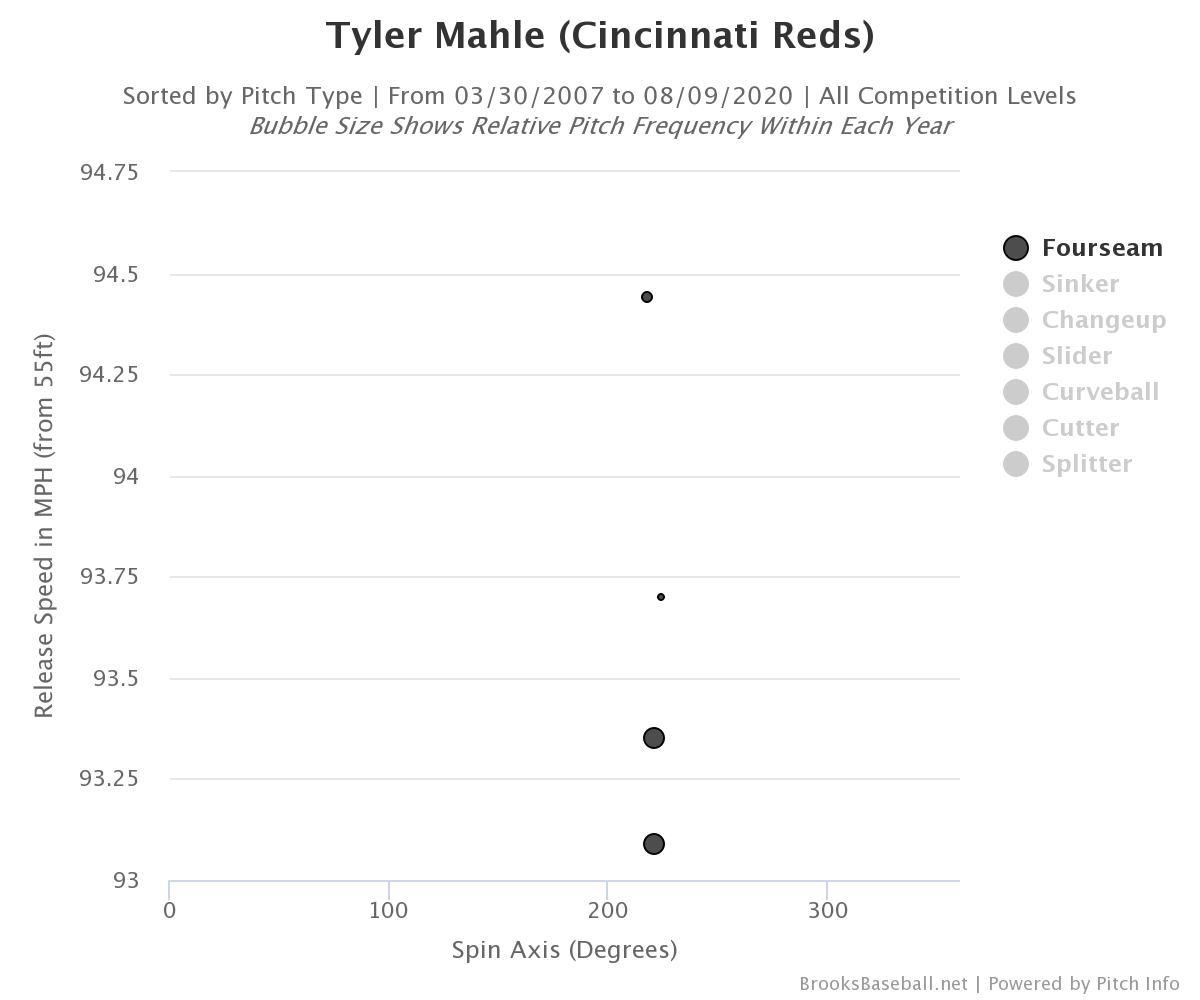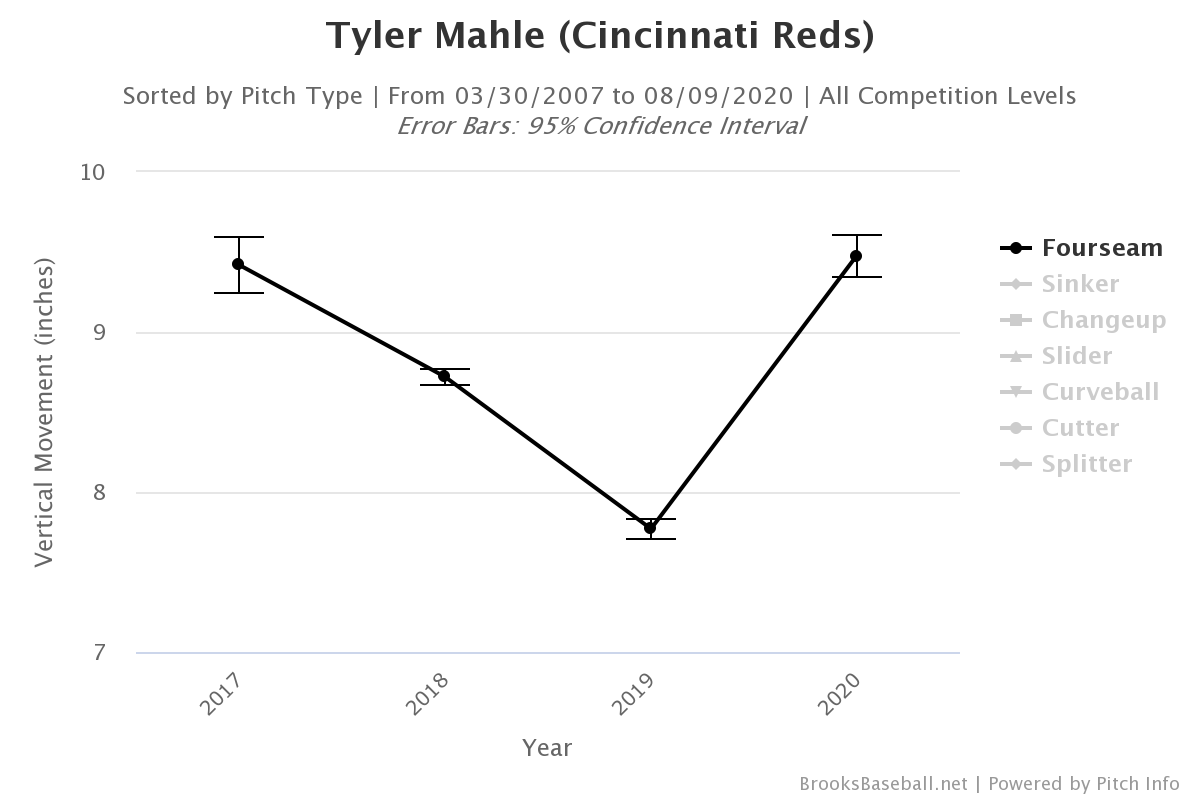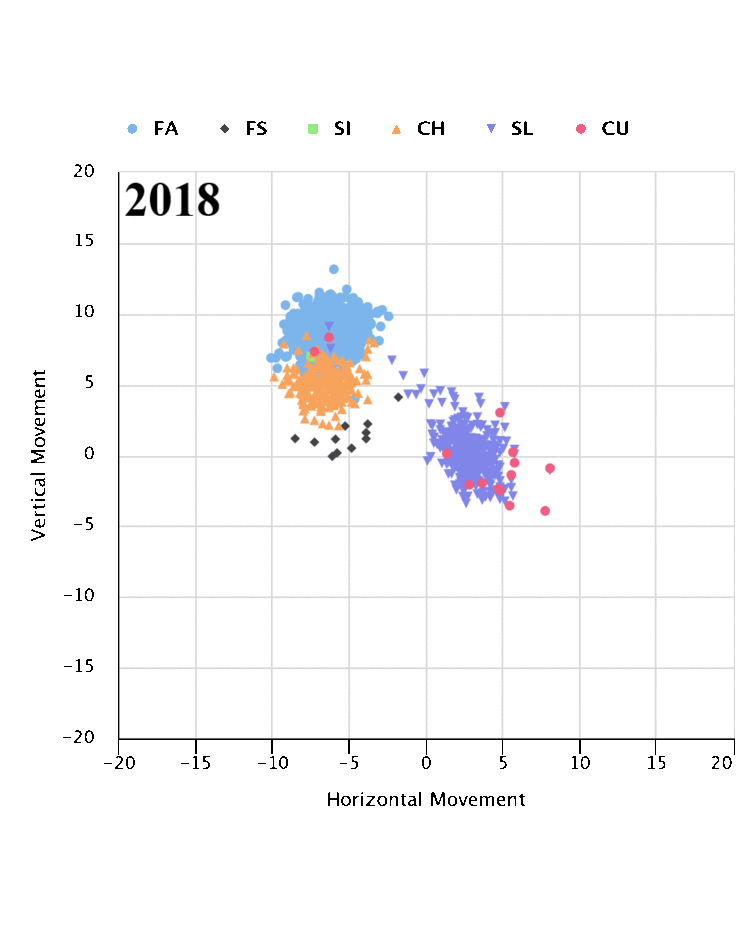I’ve always liked Tyler Mahle. Any time you have a pitcher with plus command and a fastball that doesn’t get hit around, you have a foundation for success, and for Mahle, those two things are true. The issue is, outside of those two things, his fastball isn’t overpowering, per se, and he hasn’t had a dominant secondary pitch to pair with it.
In 2019, Mahle tried to address this. The slider, he figured, wasn’t overwhelming, so he swapped it out for a curveball. He added a splitter too. The thing is, the curveball turned out to be more of a get-me-over pitch, and the splitter wasn’t something that he could feature as his main secondary offering. Most splitters aren’t.
Mahle’s tried to address this, once again. A tweet of his change, from Dustin McComas:
Might not seem like much, but combine those changes with a different pitch arsenal and so far you're getting good results in an organization that's creating a positive rep for developing arms. pic.twitter.com/DmeeM0dy3G
— Dustin McComas (@DustinLMcComas) August 9, 2020
Ah yes! Shortening one’s arm action is all the rage nowadays — and for good reason. It’s come with some pretty typical positive side effects: a bump in velocity, and a bump in spin rate as a result. The thing is, something else has changed, and it’s probably more important than either.
Consider Mahle’s fastball, by velocity and spin axis:

In order, from top to bottom, you’ll see his fastballs from 2020, 2019, 2017, and 2018. In the past, his fastball has spun at a really solid spin axis at, or just above, 220-degrees. The bump in velocity is nice, and the added spin rate we’ll take too, but he’s shifted his spin axis a touch to 217-degrees, which speaks to even more optimal spin on his fastball.
Mahle ranked in the 68th percentile in active spin rate last year, at 87.8%. Like I said, he spins his fastball pretty well! The thing is, Mahle has increased his active spin rate considerably since then. Now? He’s tied with Gerrit Cole for the best active spin rate in baseball, at 100%.
I should mention that I have my reservations with Baseball Savant’s active spin leaderboard. It’s not perfect, and their numbers are disparate from Driveline’s spin efficiency numbers, which I might prefer to Baseball Savant’s. And then there’s the calibration issues with the installment of Hawk-Eye. In any case, Mahle spun his fastball pretty efficiently, but now he spins it just about as efficiently as possible, killing most (or all?) of the gyro spin that he had in the past. At least ostensibly. That’s going to make for a good fastball.
Consider his fastball over the years, by vertical movement:

The ride of Mahle’s fastball is just about the best it’s ever been. As of right now, he’s got the best combination of fastball velocity, raw spin, active spin, and ride of his career, so color me unsurprised that he’s raised his fastball swinging-strike rate from his career 8.4% to 12.5% in 2020. As of right now, that’s better than Lance Lynn, who throws his fastball more than 55% of the time, and its bests Max Scherzer, Blake Snell, and Trevor Bauer, too.
On one hand, this is pretty surprising. I mean, I couldn’t have ever expected results this profound. But then, on the other hand, the Reds have pitching coach Derek Johnson, who’s got a good reputation, and of course, Driveline’s Kyle Boddy. Mahle might have been one of the more obvious guys to make a few tweaks and then dominate. Perhaps we should have seen this coming.
As is the nature of these things, Mahle’s entire pitch ecosystem has changed. A gif, showing the movement of his pitches since 2018:

There’s quite a bit to take in here, so I want you to ignore pitch classification (i.e., the different colors). For all intents and purposes, those don’t matter here. We care about the actual pitch properties — not the names.
For Mahle, in 2019, his cutter was all over the place in terms of movement. I don’t know if it was purposeful, but, depending on the pitch, it would get glove-side or arm-side movement. Judging from how it got rocked, I can’t imagine Mahle was meaning to do this. And for a command guy, you want to be able to, you know, command your pitches.
In place of the curveball, which wasn’t a pitch he could get whiffs with, he’s brought back his slider from 2018 as his main secondary pitch. This time, though, it’s harder. It gets classified as a cutter for some pitch tracking systems, but it gets the drop of a slider. Whatever you want to call it, it’s looking like the secondary pitch he’s been looking for.
And then there’s what Baseball Savant is calling his changeup. To me, it’s more of a splitter, by velocity and spin axis, but not by spin or movement. But, again, pitch classification doesn’t matter! Regardless, now that he’s got another secondary pitch that he can lean on, the splitter becomes a lot more interesting to me. Boddy and Co. felt it was better to go with a pitch with a lot of run as opposed to drop. Perhaps it’s an arm slot thing, because he throws from a pretty low slot.
Mahle is another pitcher that’s come out of the offseason looking like a whole new pitcher. He has what is probably one of the better fastballs in the league for starting pitchers, and now he’s got some secondary pitches to go with it. Last year, I would have been okay if someone had said that Mahle didn’t have a good pitch. Now? He might have three.
(Photo by Icon Sportswire)


Poor Mahle, seems like he’s out of the rotation already. You see him staying in the bullpen?
Sorry for the late reply! I was going to say no, but…Miley got hurt and answered your question himself!
What an excellent article, thank you.
Thank you!